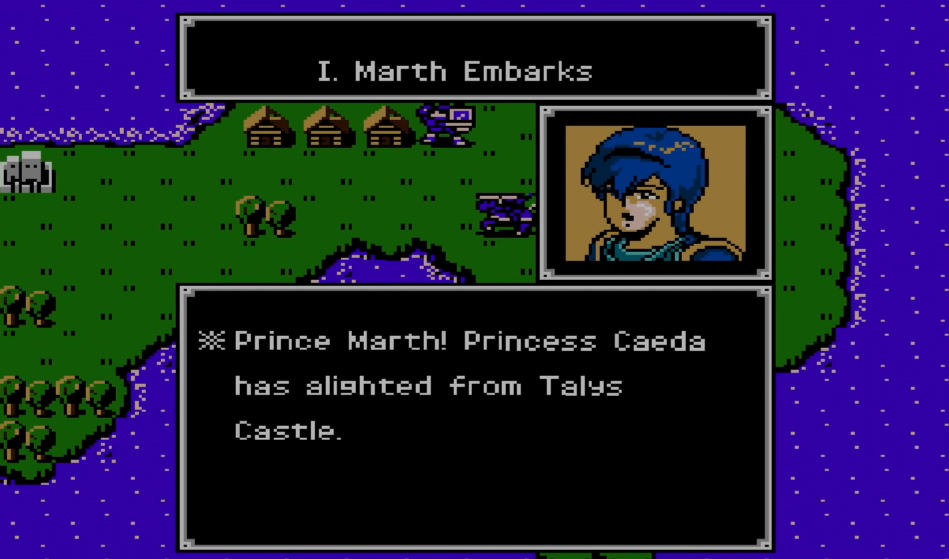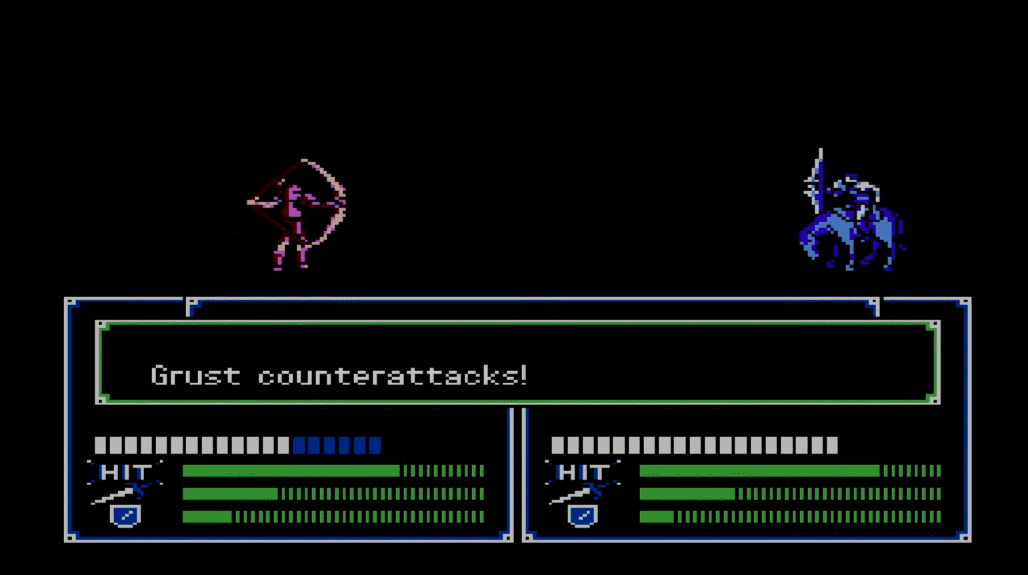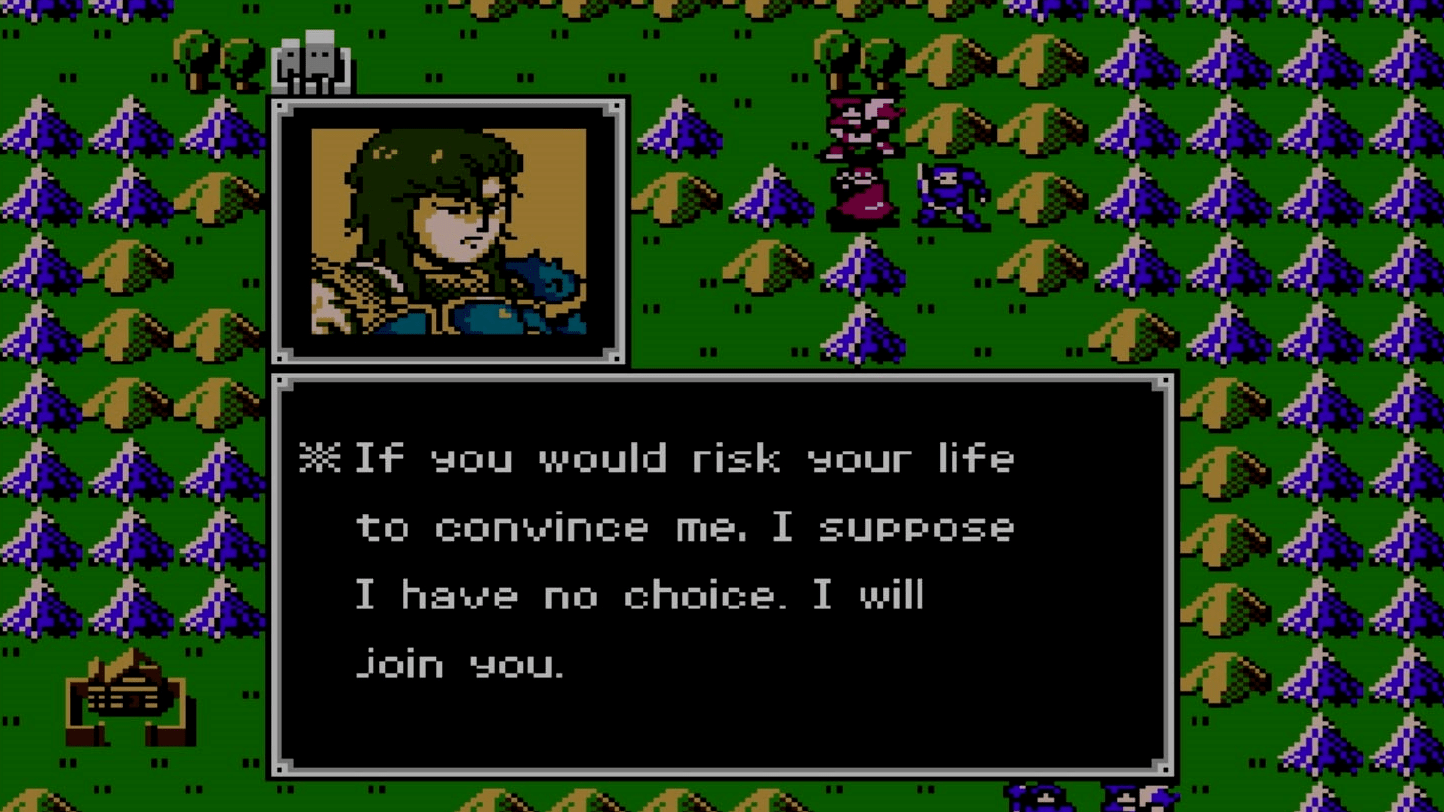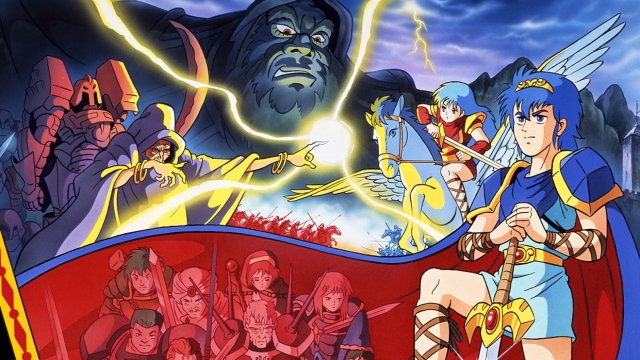I’ve spent the last week, in odd moments here and there, helping Fire Emblem’s Prince Marth search for a legendary sword and defeat the forces of darkness to rescue his kingdom from an evil wizard. Throughout all of it, in good times and bad, one question kept bubbling up to the surface: why?
Why did Nintendo decide to finally port Fire Emblem: Shadow Dragon and the Blade of Light, a never-before-localised 30-year-old Famicom game, to the Switch in 2020? Why is it charging $US6 ($8) for the game instead of including it as part of Switch Online’s subscription-based retro library, as it did in Japan last year? Why can you only buy Shadow Dragon and the Blade of Light until the end of Nintendo’s current fiscal year on March 31, 2021, after which point it will no longer be available? And why, of all the games to end 2020 on, did Nintendo decide to go with this novel time capsule?

Shadow Dragon and the Blade of Light is a turn-based tactics game, meaning you shuffle little warriors around a grid-like map, fighting enemies and occasionally levelling up, until the battle is won and a new encounter on a new map begins. Years before Tactics Ogre: Let Us Cling Together and Final Fantasy Tactics, Intelligent Systems and Nintendo put their stamp on the strategy genre with Famicom Wars, the predecessor to Advanced Wars. A couple years later, the studio put a fantasy RPG spin on the series and created Fire Emblem.
Compared to last year’s Fire Emblem: Three Houses — a strategy epic whose battles are rivaled by its tea parties to make it as much a relationship sim and visual novel as anything else — Shadow Dragon and the Blade of Light is an incredibly austere affair. There’s no weapon triangle, a series’ staple that pits swords, spears, and axes against each other in a game of rock-paper-scissors. Character development and relationships are barebones as well. Instead, you learn to care for and about your characters primarily through seeing them slowly accrue experience points, get stronger, and continue to survive a gauntlet of perma-death battles.

This slog isn’t without its charms, and I can appreciate the old-school simplicity of trying to outmaneuver opponents primarily through positioning and numbers games rather than leveraging over-powered allies and exploiting weapon matchups. The game is especially good while cooking dinner or watching sports; watching the Eagles throw down for last place in the NFL’s weakest division is a little less soul crushing when Marth parries and ends up landing the killing blow on the second thrust of his double attack.
But Shadow Dragon and the Blade of Light is an old, repetitive game that a few modern quality of life features can’t dress up. The Switch port adds a bookmark feature to save mid-battle, lets you double the speed of the game, and even replay turns if you want. But you’re still working within the limits of NES-era design. There’s no highlighted area to let you know where a unit can move, forcing you to just toggle around until you hit an invisible wall. Weapons, meanwhile, can’t be transferred directly between shopkeepers and supply caches, forcing you to tediously trade equipment between characters as you navigate slightly delayed menu pop-ups. The new localisation seems good, especially by old NES standards, which is to say I didn’t shake my head any more than usual while playing a JRPG.

Again I’m left wondering why. Did you know that Shadow Dragon and the Blade of Light was already remade once, as the first half of 1994’s Fire Emblem: Mystery of the Emblem for the Super Famicom? The graphics got a 16-bit makeover, while the second half of Mystery of the Emblem acted as a sequel continuing Marth’s journey forward, and was made part of Switch Online in Japan just a few months ago. That game didn’t come West, but Fire Emblem: Shadow Dragon, a complete remake of the original for DS, did in 2009. There’s even a Kotaku review of it, which praised the addition of online multiplayer.
Nintendo has called the no-frills Switch port a celebration of the series’ 30th anniversary, but maybe porting one of these games would have been a more fitting tribute. At the very least it could have added some more bonus features to make the occasion feel more special and less like an afterthought. The Switch Online version of Shadow Dragon and the Blade of Light in Japan adds full save-state capabilities and bonus files that let you pick up the game at the start of the third act or right before the final boss if you want. It also isn’t scheduled to disappear early next year.

Leave a Reply